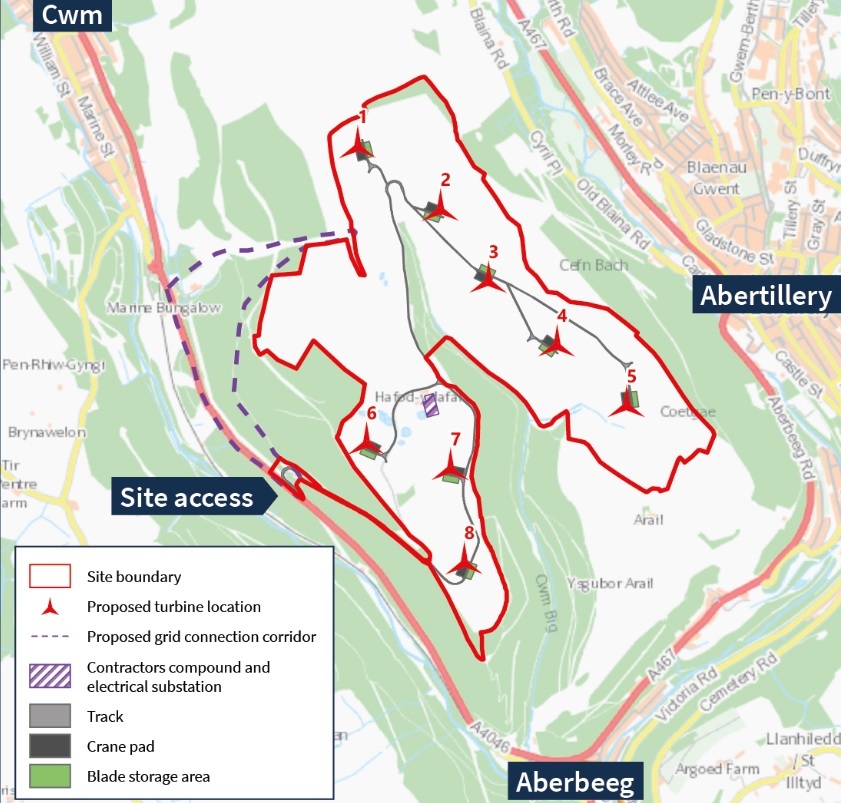Welsh Government approves controversial windfarm development

Elgan Hearn Local Democracy Reporter
A controversial wind turbine development has been given the go ahead by the Welsh Government.
The decision had been announced this week more than two months later than was originally expected.
Pennant Walters Ltd will now be able to build eight wind turbines with a maximum tip height of 180 metres at Mynydd Carn y Cefn between Abertillery and Cwm.
National significance
The proposal was being dealt with by Welsh Government planning inspectors as a Development of National Significance (DNS).
This means that in this instance Blaenau Gwent were a consultee and not a decision maker.
They were allowed to feed into the process by producing a Local Impact Report (LIR).
In their LIR which was submitted to PEDW (Planning and Environment Decision Wales) last year, the council had come to the conclusion that the proposal would have a “negative” impact on the county borough.

In January 2023 while discussing the LIR, Blaenau Gwent councillors had argued against the scheme and pointed out that a previous wind turbine planning application at Carn y Cefn from 10 years ago had been rejected as there are: “geological faults in the mountain.”
But “on balance” planning inspectors were in favour of the scheme.
The planning inspector said: “Decision makers must give significant weight to the need to meet Wales’ international commitments and the target of generating 70 per cent of energy used from renewable sources by 2030.
Energy for 21,100 homes
“The proposed development would see the generation of up to 34MW of renewable energy which would support the electricity needs of approximately 21,100 homes each year over its operational lifespan.
“The inspector therefore considers the proposed development would make a
meaningful contribution to the Welsh Government’ss commitment to developing large scale renewable and low carbon energy to meet future energy needs and combat the climate emergency.”
The inspector added that the scheme would also offer social and economic benefits.
These would need to be balanced on the scales against any adverse impacts of the scheme and the inspector believed there is a need to accept “to some degree” that the landscape would change.
“Significant and adverse” visual impact
The inspector said that the development could be accommodated within the landscape in an acceptable manner.
This is despite saying that the visual effect of the development locally would be “significant and adverse.”
The inspector said: “Overall, the inspector affords this harm moderate weight.”
The inspector went on to recommend giving planning permission to the plan.

Welsh Government minister for Climate Change, Julie James MS said: “I agree with the Inspector’s appraisal of the main considerations, the conclusions of the and the reasoning behind them, and I accept the recommendation.
“Therefore, I hereby grant planning permission subject to conditions.”
Support our Nation today
For the price of a cup of coffee a month you can help us create an independent, not-for-profit, national news service for the people of Wales, by the people of Wales.








This is a disgraceful desecration of the beautiful environment of Cymru!
Wake up Mabion Glyndŵr and fight this!
There is a ban on large scale onshore wind farms in lloegr so why do we suffer them here when we do not need them as we already produce more than we need regarding electricity (as many others have pointed out) and the profits are leached out of Cymru in addition!